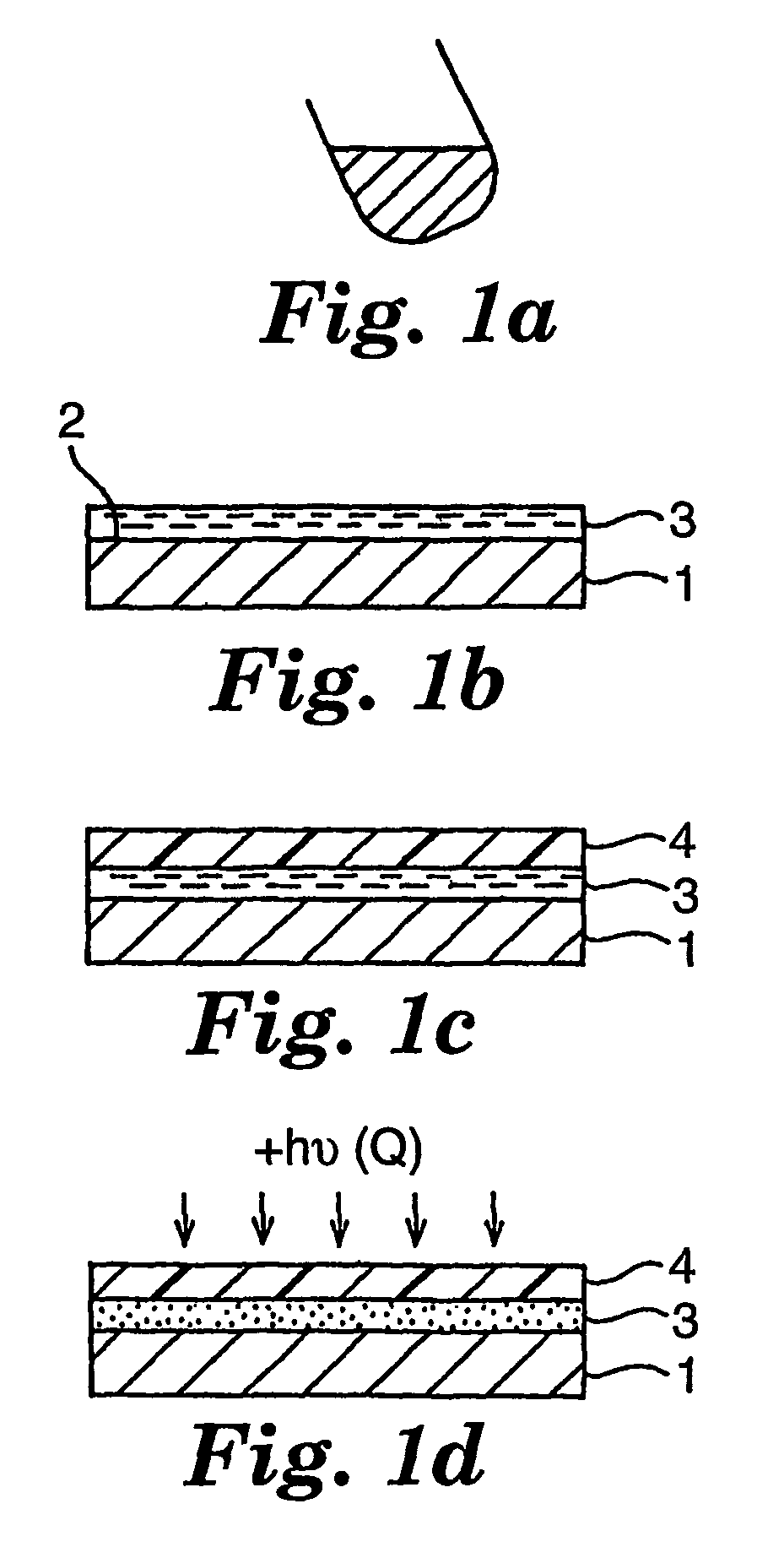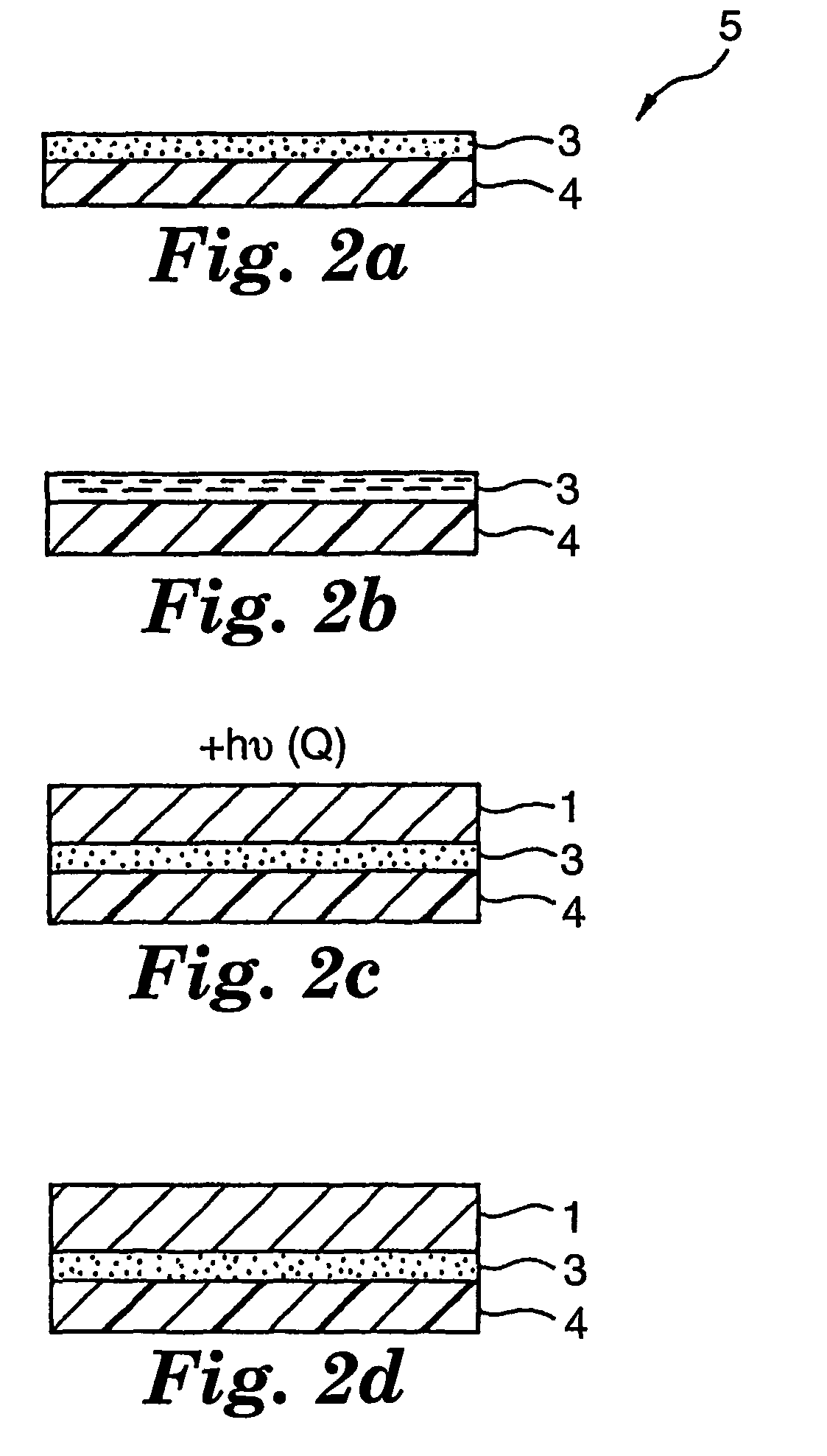Semiconductor surface protecting method
a technology of surface protection and silicone, applied in the direction of heat-activated film/foil adhesive, semiconductor/solid-state device details, manufacturing tools, etc., can solve the problems of reducing the ability of presently employed pressure-sensitive adhesive surface protection sheets, and reducing the transverse strength of the wafer. , to achieve the effect of adequate conformability and sufficient rigidity
- Summary
- Abstract
- Description
- Claims
- Application Information
AI Technical Summary
Benefits of technology
Problems solved by technology
Method used
Image
Examples
example 1 (
Ultraviolet Curing Solid Protecting Layer)
[0044]
TABLE 1WeightChemical NameProduct NamePercentUrethane acrylateUV3520TL76.1%Tris(acryloxyethyl)isocyanurateM31519.1%2-Benzyl-2-dimethylamino-1-(4-Irgacure 3694.8%morpholinophenyl)-butanone-1100.0%
example 2 (
Ultraviolet Curing Solid Protecting Layer)
[0045]
TABLE 2WeightChemical NameProduct NamePercentUrethane acrylateUV3510TL76.2%Bisphenol A diacrylateVR9019.0%2-Benzyl-2-dimethylamino-1-(4-Irgacure 3694.8%morpholinophenyl)-butanone-1100.0%
example 3 (
Ultraviolet Curing Solid Protecting Layer)
[0046]
TABLE 3WeightChemical NameProduct NamePercentUrethane acrylateUV3510TL57.1%Bisphenol A diacrylateVR9038.1%2-Benzyl-2-dimethylamino-1-(4-Irgacure 3694.8%morpholinophenyl)-butanone-1100.0%
PUM
| Property | Measurement | Unit |
|---|---|---|
| temperature | aaaaa | aaaaa |
| temperature | aaaaa | aaaaa |
| temperature | aaaaa | aaaaa |
Abstract
Description
Claims
Application Information
 Login to View More
Login to View More - R&D
- Intellectual Property
- Life Sciences
- Materials
- Tech Scout
- Unparalleled Data Quality
- Higher Quality Content
- 60% Fewer Hallucinations
Browse by: Latest US Patents, China's latest patents, Technical Efficacy Thesaurus, Application Domain, Technology Topic, Popular Technical Reports.
© 2025 PatSnap. All rights reserved.Legal|Privacy policy|Modern Slavery Act Transparency Statement|Sitemap|About US| Contact US: help@patsnap.com



